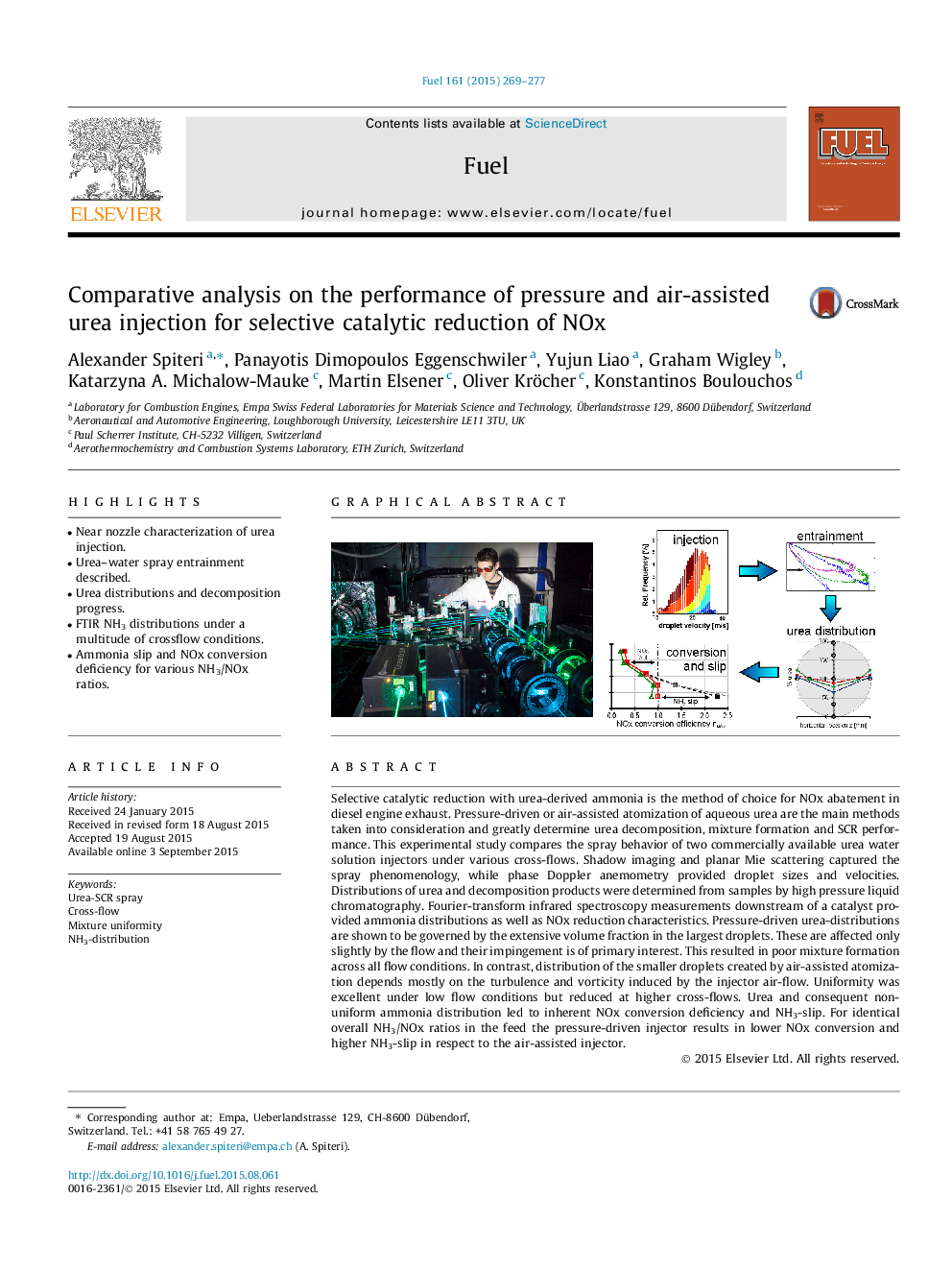| کد مقاله | کد نشریه | سال انتشار | مقاله انگلیسی | نسخه تمام متن |
|---|---|---|---|---|
| 205449 | 461109 | 2015 | 9 صفحه PDF | دانلود رایگان |

• Near nozzle characterization of urea injection.
• Urea–water spray entrainment described.
• Urea distributions and decomposition progress.
• FTIR NH3 distributions under a multitude of crossflow conditions.
• Ammonia slip and NOx conversion deficiency for various NH3/NOx ratios.
Selective catalytic reduction with urea-derived ammonia is the method of choice for NOx abatement in diesel engine exhaust. Pressure-driven or air-assisted atomization of aqueous urea are the main methods taken into consideration and greatly determine urea decomposition, mixture formation and SCR performance. This experimental study compares the spray behavior of two commercially available urea water solution injectors under various cross-flows. Shadow imaging and planar Mie scattering captured the spray phenomenology, while phase Doppler anemometry provided droplet sizes and velocities. Distributions of urea and decomposition products were determined from samples by high pressure liquid chromatography. Fourier-transform infrared spectroscopy measurements downstream of a catalyst provided ammonia distributions as well as NOx reduction characteristics. Pressure-driven urea-distributions are shown to be governed by the extensive volume fraction in the largest droplets. These are affected only slightly by the flow and their impingement is of primary interest. This resulted in poor mixture formation across all flow conditions. In contrast, distribution of the smaller droplets created by air-assisted atomization depends mostly on the turbulence and vorticity induced by the injector air-flow. Uniformity was excellent under low flow conditions but reduced at higher cross-flows. Urea and consequent non-uniform ammonia distribution led to inherent NOx conversion deficiency and NH3-slip. For identical overall NH3/NOx ratios in the feed the pressure-driven injector results in lower NOx conversion and higher NH3-slip in respect to the air-assisted injector.
Figure optionsDownload as PowerPoint slide
Journal: Fuel - Volume 161, 1 December 2015, Pages 269–277